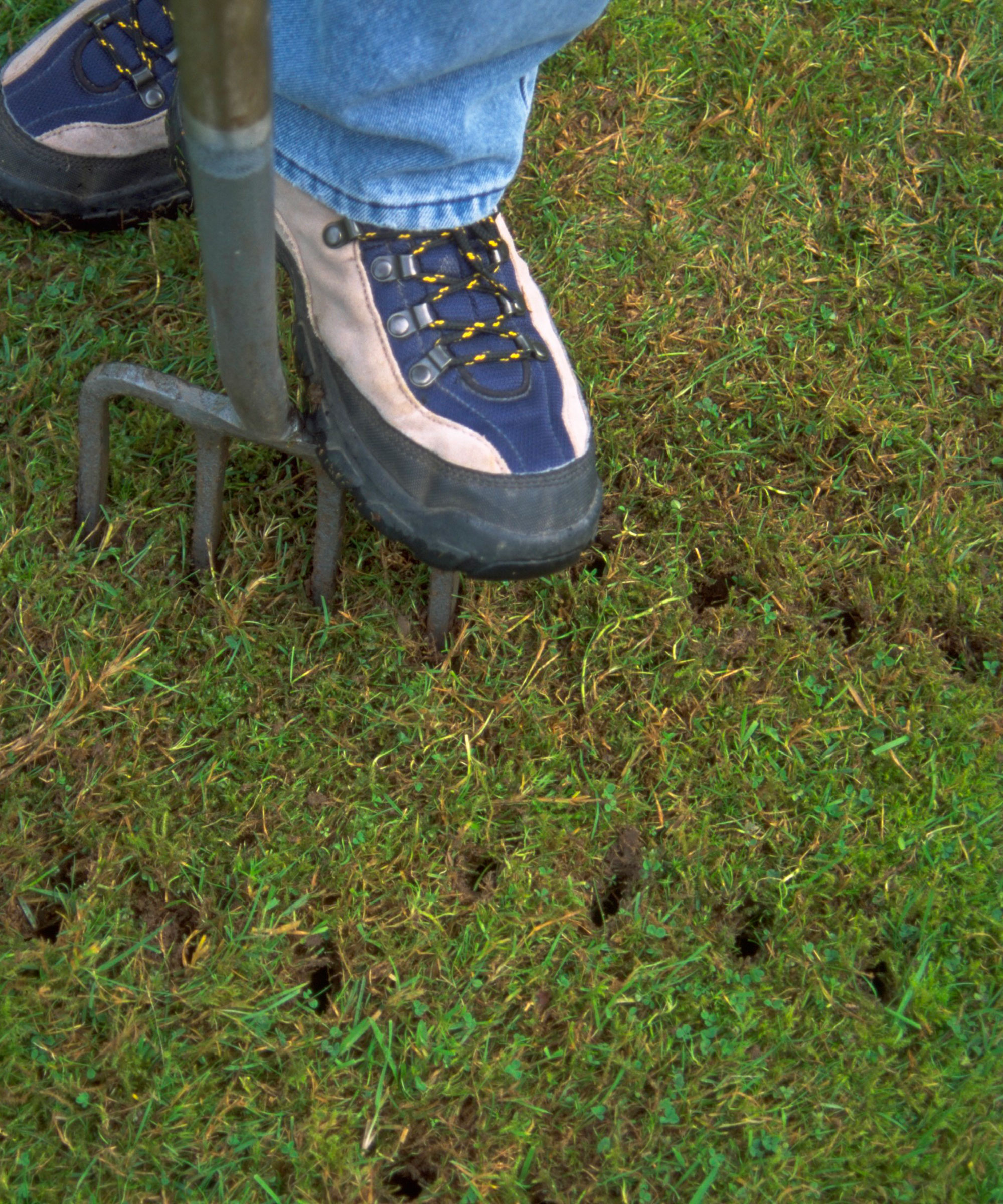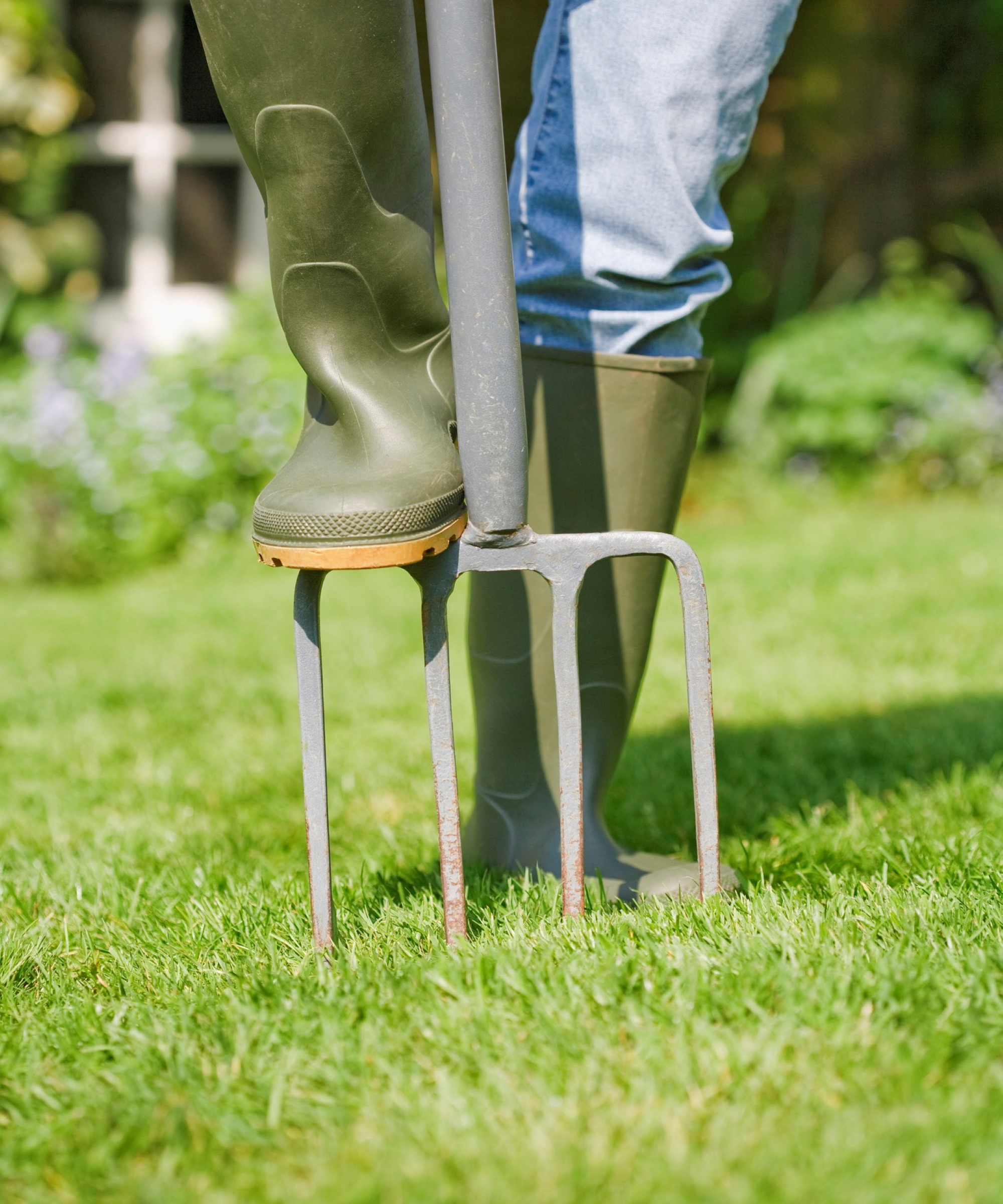When is the best time to aerate a lawn? Experts give the definitive answer
Find out when to aerate a lawn so you can keep your turf in peak condition and ensure plenty of healthy new growth

If you're debating with yourself when to aerate a lawn, this guide will answer all your questions. Perhaps you're worried that you've left it too late in the year or are wondering whether it's recommended to aerate more than once a year.
Learning how to aerate a lawn is an essential component of lawn maintenance. However, timing plays a crucial part in making the most of this aspect of looking after your lawn. Aerate at the wrong time of year or during the wrong kind of weather and your efforts to prevent soil compaction will be wasted.
We've asked lawn care experts with decades of lawn care experience under their belts about when to aerate a lawn. Here's what they told us.

When to aerate a lawn for the best results
Depending on your climate, late spring or fall is the best time to aerate a lawn. Brendon Willis, the founder and CEO of Willis Lawn Services in Oklahoma City, explains that 'typically, in the northern parts of the country that have cool-season grass such as Kentucky Bluegrass, Tall Fescue, or Rye, aerating is done in the fall with the purpose of aerating the soil while overseeding the lawn to re-establish from any summer damage.'
On the other hand, 'in southern states with a warm season grass such as Bermuda or Zoysia, aerating is typically performed in late spring and early summer months. This gives the turf a whole season to enjoy the benefits of fresh new air and reduced soil compaction.'

What are the benefits of aerating a lawn in spring and fall?
Spring and fall provide the ideal conditions for aerating soil as part of your annual lawn care cycle because of the relatively mild temperatures combined with plenty of moisture. Chris Lemcke, Technical Director of the franchised lawn care provider Weed Man, explains that 'typically spring and fall are the ideal times to aerate as the cooler temperatures, paired with rain, can improve results.'
If you've ever tried aerating a frozen lawn or one that's hard from months of summer drought, you'll know that spring and fall soil-softening effects are far better suited to performing this task.
Lemcke recommends always aerating your lawn before the next period of active growth during the summer. The increased foot traffic during the summer months (from pets, family, and friends) 'can leave your lawn compacted due to the weight and pressure. Pulling out the small cores of soil helps your lawn release the added stress and tension.
'If your soil is compacted, your lawn will experience what is known as runoff, therefore when it rains, or when you water your lawn, it won't be able to penetrate through the dense soil layer.'

Jeremy Yamaguchi, lawn expert and the CEO of Lawn Love, adds that not aerating your lawn at the correct times of year will hinder new growth. Aerating 'allows air to better circulate throughout the soil, and when you add healthy compost over the soil, it gives that room to incorporate. It is important for your soil to be broken up so that nutrients don’t get packed and thus aren’t inaccessible by plant roots.'
So, to make sure your lawn grows back healthy and strong every year, make aerating part of your spring lawn care and/or fall lawn care routine.
Should you aerate a lawn when it's dry or wet?
The answer is: the soil should be moist but not completely wet. The rationale is that, as Willis explains, 'aerating while the soil is dry can be nearly completely ineffective. And aerating saturated soil will be a muddy mess and difficult to achieve the results you are after.'
So aerating in spring or fall should give you the best chance of doing it in the optimum conditions.
Anna writes about interior design and gardening. Her work has appeared in Homes & Gardens, Livingetc, and many other publications. She is an experienced outdoor and indoor gardener and has a passion for growing roses and Japanese maples in her outside space.
